Junkyard Gem: 1979 Lincoln Versailles

Sometimes a car manufacturer creates a chassis design that continues to make money for decade after decade, and that’s just the jackpot that the Ford Motor Company hit when it built the 1960 Ford Falcon. While that car itself stayed in production in Argentina all the way through 1991, the real payoff for Dearborn came with the many vehicles that ended up being built on modified versions of that platform. There was the original Mustang, of course (and its Mercury Cougar sibling), but also the Ford Maverick/Mercury Comet and its successors, the Ford Granada, Mercury Monarch and Lincoln Versailles. That last car is one of the rarest of all the 1960 Falcon descendants, and I’ve managed to find a nice example in a boneyard in Sparks, Nevada.
The Lincoln Versailles wasn’t the first Ford product to be named after Louis XIV’s pad in France. That honor went to the mid-1950s Ford Vedette Versailles, a flathead V8-powered sibling to the Simca Vedette and Chambord.
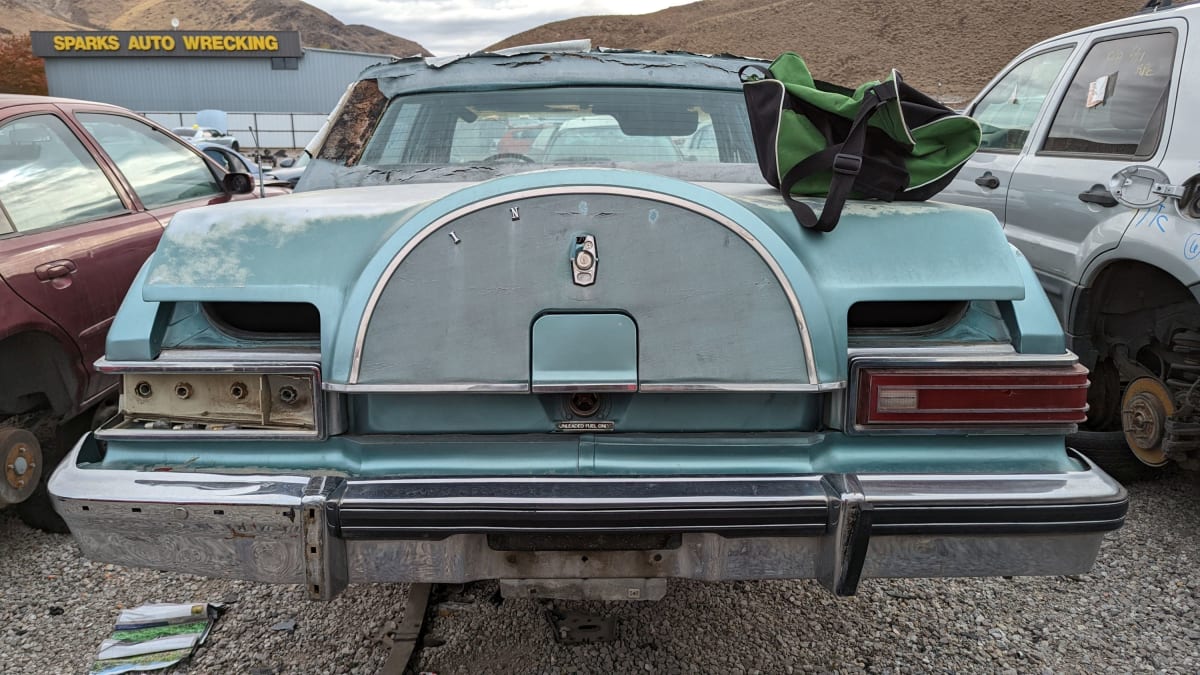
The Lincoln Versailles was built from the 1977 through 1980 model years. The idea was that it would compete with the very successful Cadillac Seville, a Chevy Nova-based luxury sedan that debuted for the 1976 model year.
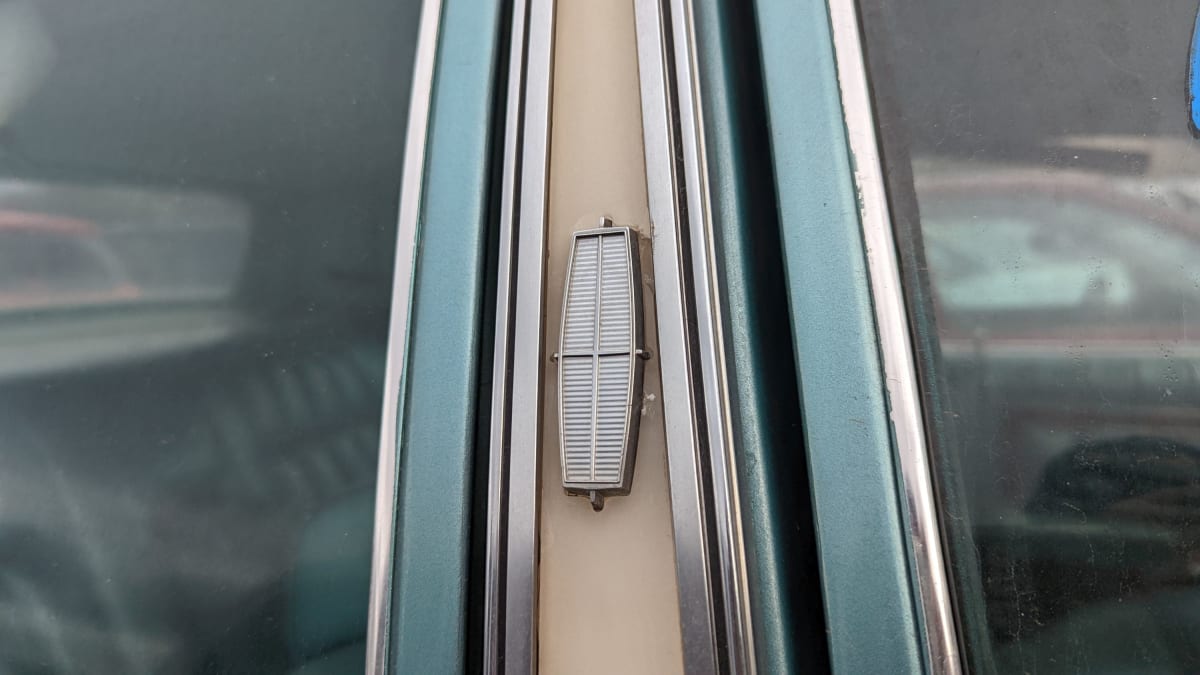
These cars were not big sellers, with just over 50,000 produced during their four model years. This one is the first junkyard example I’ve seen for at least 20 years.
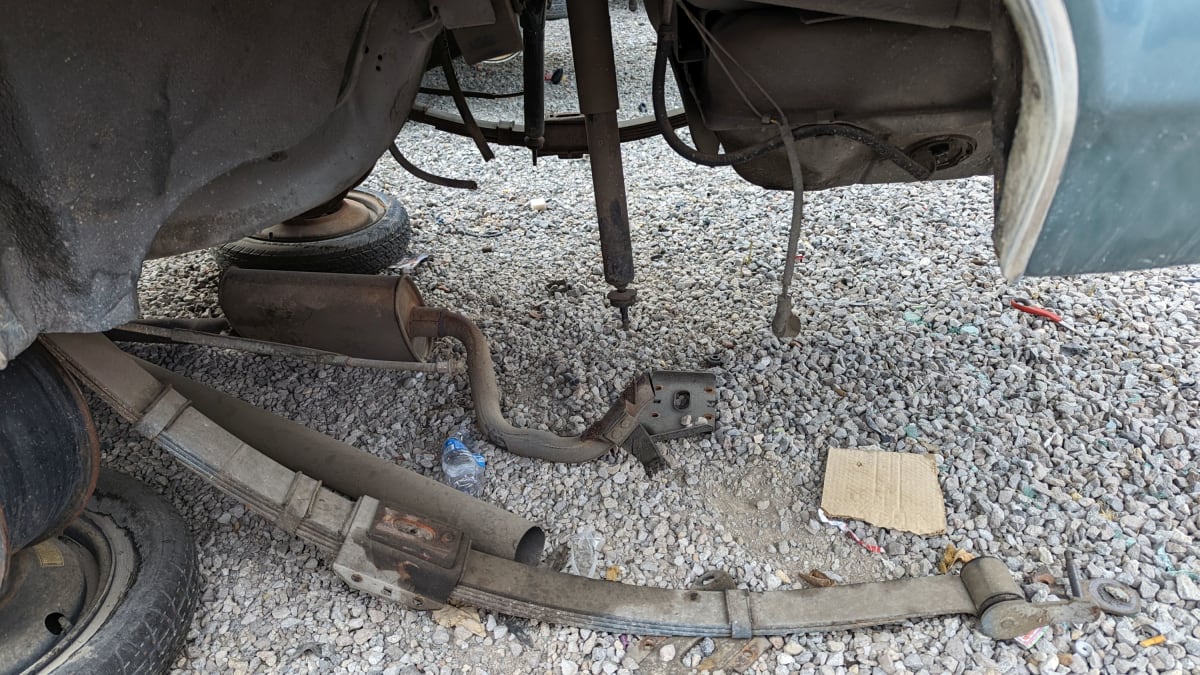
The Versailles came with a sturdy 9-inch rear axle assembly and was equipped with disc brakes all the way around. Since it bolts straight into a 1964-1973 Mustang (and many other related Fords), a Versailles rear is always the first thing purchased when one of these cars hits the junkyard. This one probably got yanked by the very first junkyard customer who recognized what it was.
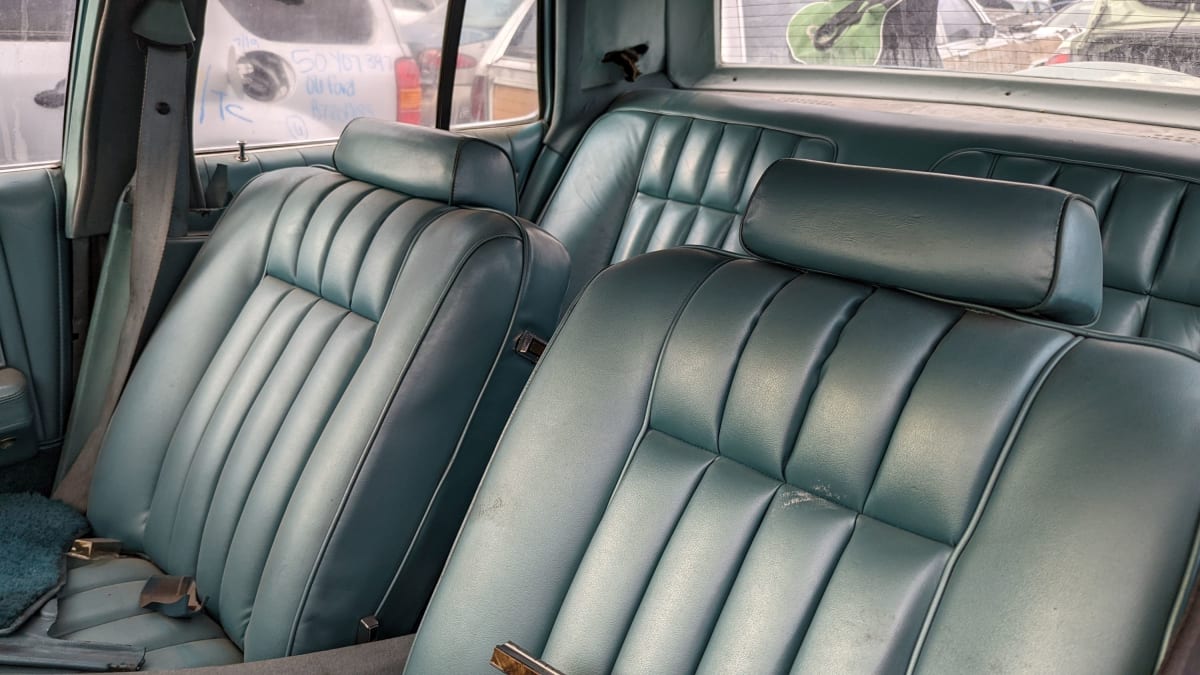
The interior is still very, very nice. The front seats appear to be the “Flight Bench” split-bucket type, done up in turqouise “Champagne Dorchester” cloth.
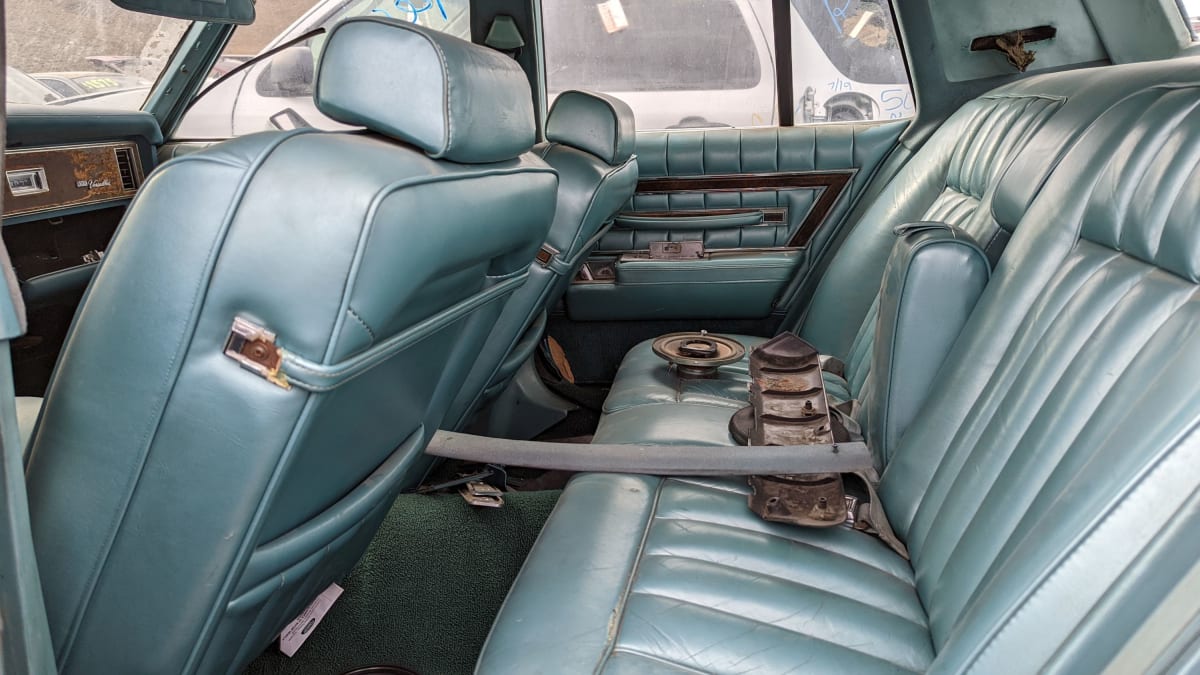
You wouldn’t see an interior this luxurious in a Granada! And I would know, since I took my first driver’s test in my family’s 1979 Granada.
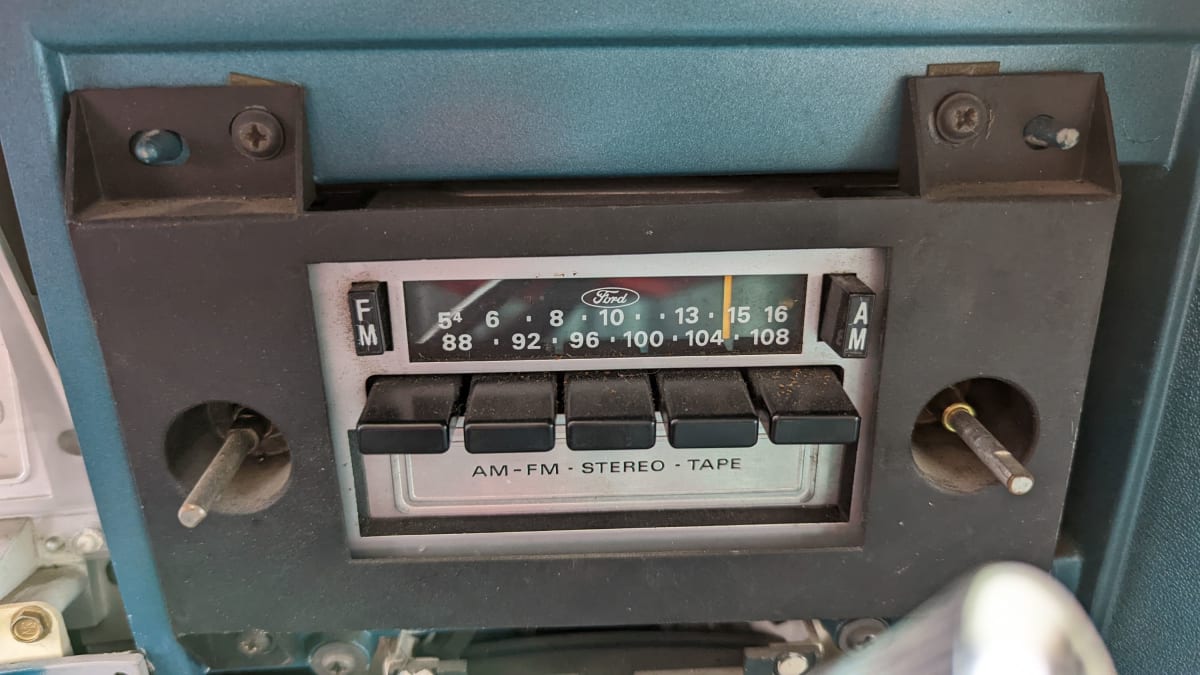
A factory AM/FM/8-track radio came as standard equipment in this car. For an extra $321 ($1,395 in 2022 dollars), you could have a factory CB radio as well. The aftermarket also provided trunk-mount CBs.
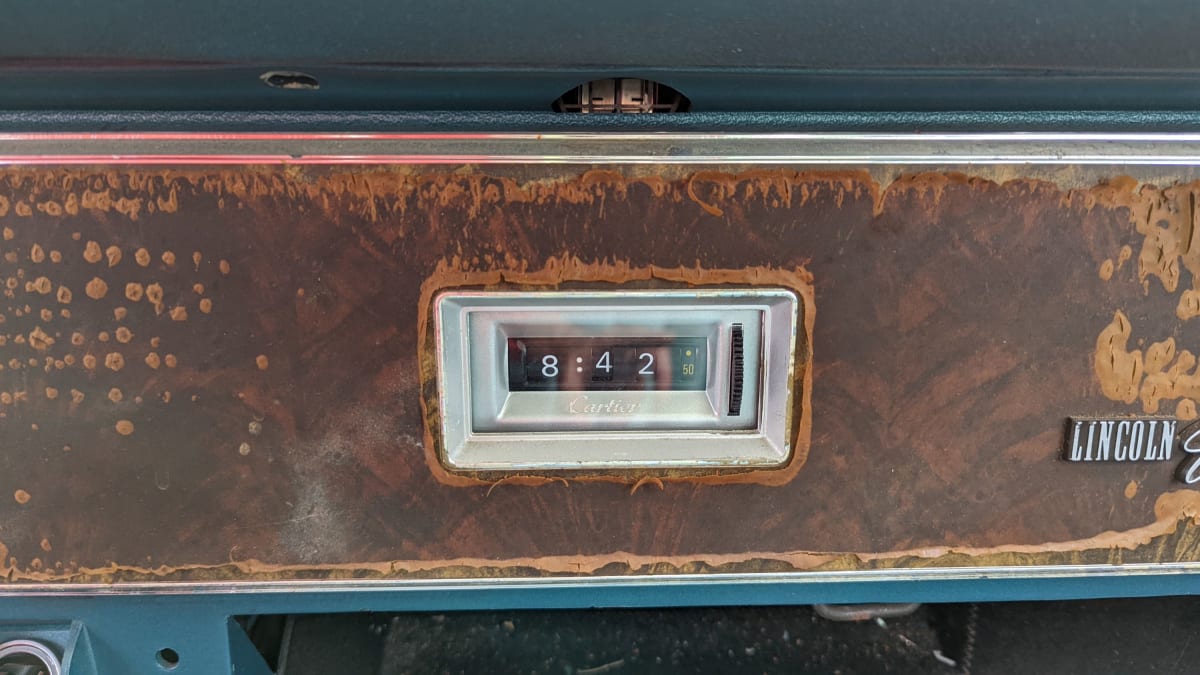
A Cartier-badged mechanical-digital clock was also standard equipment. This is essentially the same clock that went into much cheaper Fords of the decade.
Because the Granada and Monarch had their fuel fillers between the taillights and the Versailles needed a deeper decklid for its “Continental kit” look, Lincoln installed a little access door in the decklid. That workaround was much cheaper than relocating the fuel filler.
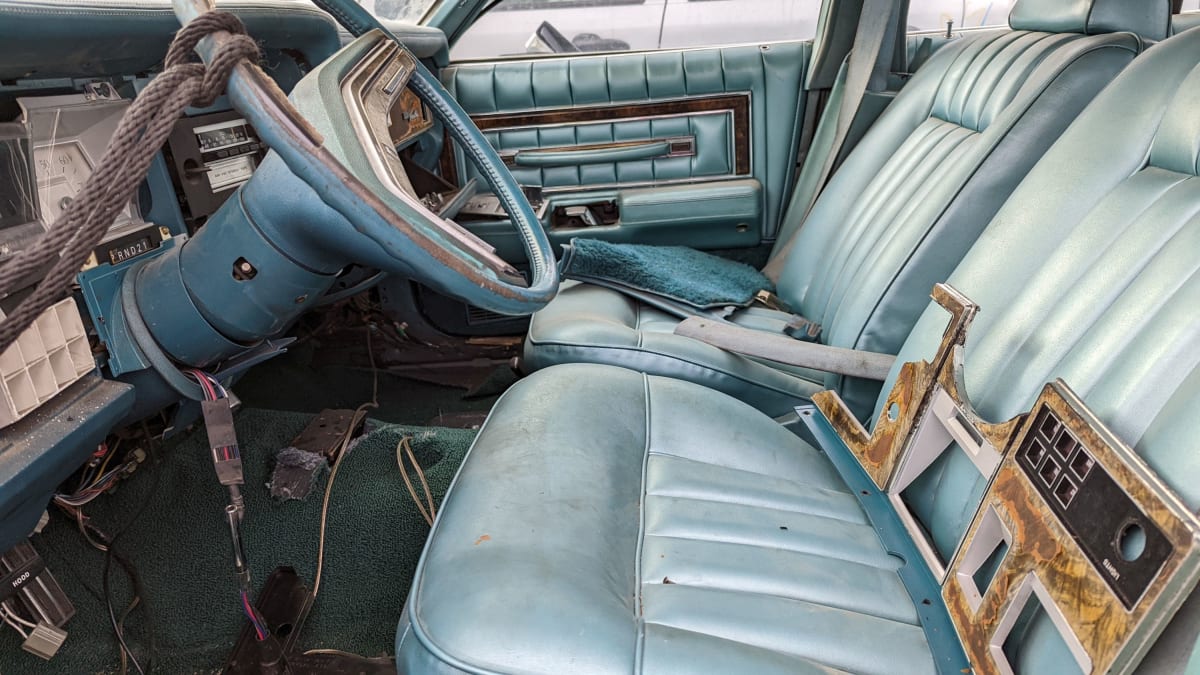
The price tag on this car started at $13,763, or about $59,805 in 2023 dollars. That was more expensive than the 1979 Lincoln Continental sedan ($12,093, or $52,550 now) and just a bit cheaper than the 1979 Lincoln Mark V personal luxury coupe ($13,771, or $59,840 today). Meanwhile, the entry-level 1979 Granada sedan could be purchased for $4,678 ($20,328) and Mercury would sell you a Monarch sedan for as little as $4,737 ($20,585). Just to make it harder to sell the Versailles, it would have been seen in the same Lincoln-Mercury showrooms as the similar-looking Monarch.
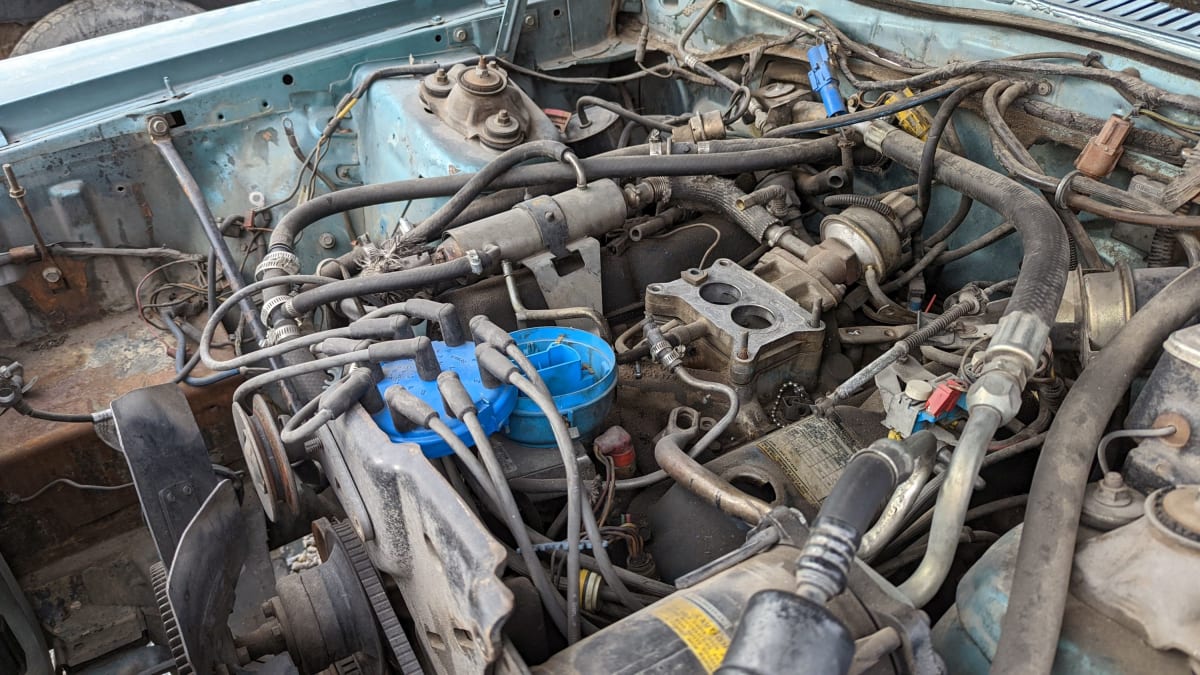
The engine is a 302-cubic-inch (5.0-liter) Windsor V8 rated at 133 horsepower. A three-speed automatic was the only transmission available in the Versailles.
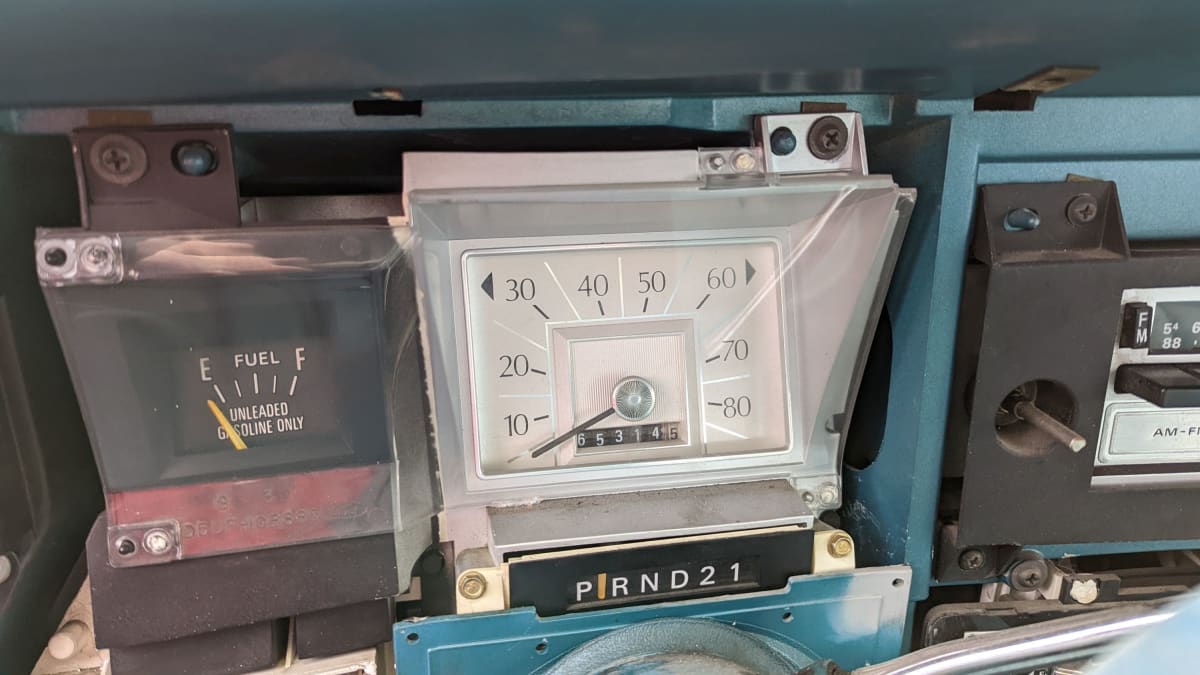
The door tag says this car was built at the Wayne Stamping and Assembly Plant in Michigan (now part of the Michigan Assembly Plant, where Rangers and Broncos are born today), then sold out of the sales office of Oakland, California (which makes sense for a Nevada car, as Oakland isn’t far away).
If you wanted to buy your new Versailles from Bart Starr, such a transaction could be arranged!
The pride of owning a Lincoln, distilled to a 110-inch wheelbase. The use of a Frank Sinatra song is interesting, given that Sinatra’s buddy Lee Iacocca got canned as Ford president by Henry Ford II in 1978, then ordered the creation of a Frank Sinatra Edition Imperial soon after being hired to run Chrysler. Vengeance!







